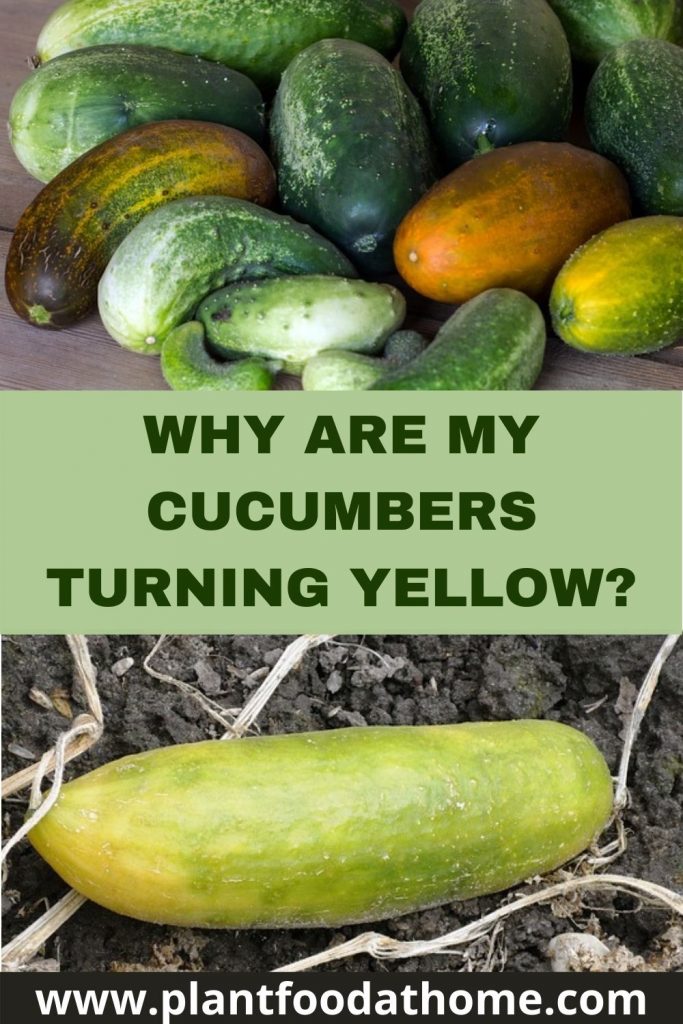Have you ever wondered ‘why are my cucumbers turning yellow?’ Well, I have some answers for you. If you’ve ever experienced the disappointment of yellow cucumbers, there is plenty that you can do to prevent it from happening again.
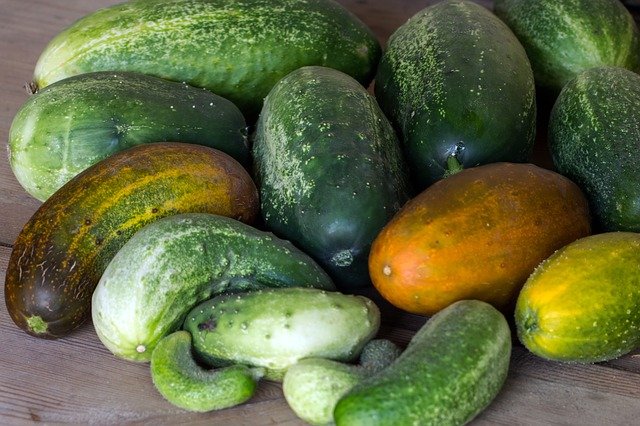
Table of Contents
Why Are My Cucumbers Yellow?
The most common cause of yellow cucumbers is over-ripening due to being left on the vine too long. Other causes include a lack of soil nutrients, watering problems, lack of pollination, and pests and diseases.
Let’s look at each reason why your cucumbers are turning yellow and how you can fix the problem for an abundant harvest of healthy cucumbers.
Related: Cucumbers Pests | Burpless Cucumbers | Growing Cucumbers | DIY Cucumber Trellis
1. Cucumbers Over-Ripening
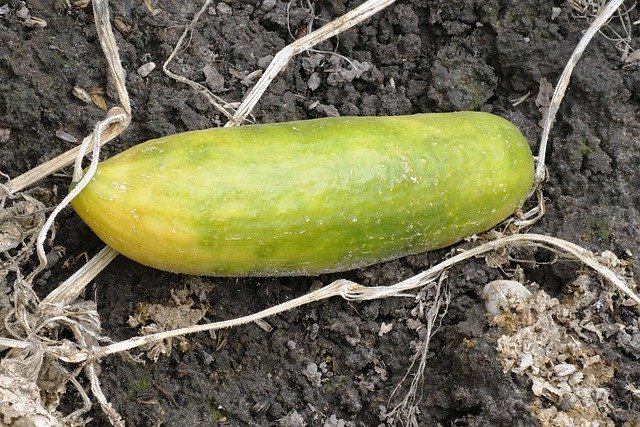
The most common reason for yellow cucumbers is simply over-ripening. Most cucumbers are ready to harvest when they are deep to bright green, depending on the variety.
Cucumbers are fast growers and most varieties are ready to harvest 50-70 days after planting.
It’s tempting to leave cucumbers on the vine to increase in size. But when they start to get too big, the flesh becomes soft, the taste becomes bitter and the skin becomes tough and the cucumber turns yellow.
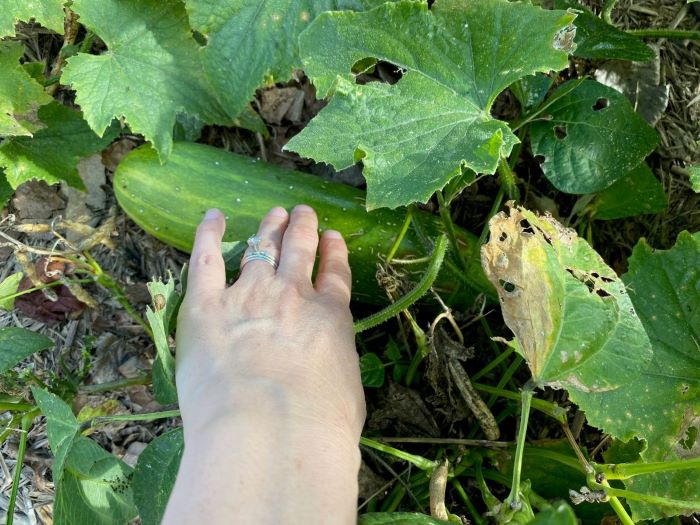
Cucumbers are best picked while they are still immature before there is any indication of yellowing.
For slicing cucumbers, this will be about 8 inches. For pickling cucumbers, harvest them much earlier.
Since the fruit ripens at different times, plan to pick cucumbers every day or two to avoid leaving them on the vine too long. Other benefits of harvesting your cucumbers earlier are:
- Cucumbers are less bitter
- They are crisper
- Cucumbers have better nutritional value
- It encourages new flower growth and cucumber production
2. Poor Soil Quality for Growing Cucumbers
If it appears your cucumbers are turning yellow early or cucumbers turning yellow when small and they also appear stunted, you may have poor soil quality.
Cucumbers are generally very tolerant of various soil qualities, but they do require nutrients from the soil to thrive.
If you’ve been growing cucumbers in the same area for more than two years and have noticed that the quality of the fruit has decreased, it’s likely due to low soil quality. Here are some ways you can improve your soil:
- Rotate cucumber crops – Planting the same crops in the same location year after year will deplete the soil of the nutrients that the crop needs the most. Rotating cucumber crops helps preserve soil quality.
- Add compost and aged manure – Compost and aged manure add essential nutrients to the soil.
- Add fertilizer – Fertilizer, like 10-10-10, adds nutrients to the soil. I use this organic vegetable fertilizer.
3. Inconsistent Watering of Cucumber Plants
Cucumber plants have shallow root systems and are sensitive to inconsistent watering. Without regular water, cucumbers will turn yellow. They thrive when the soil remains slightly damp.
Water cucumber plants twice a week with 1-2 inches (25-50mm) of water, or any time the top inch of soil feels dry to the touch.
If there has been rain, water cucumber plants less. And during cucumber fruit formation, water can be increased to around a gallon (3.7lt) throughout the week.
Keep an eye on the soil drainage. If you have poor drainage and the roots stay too wet, your cucumber plants are at risk of fungal or bacterial diseases, such as root rot.
If you are unsure about the soil moisture you can monitor it with a watering gauge.
4. Lack of Pollination Causes Yellow Cucumbers
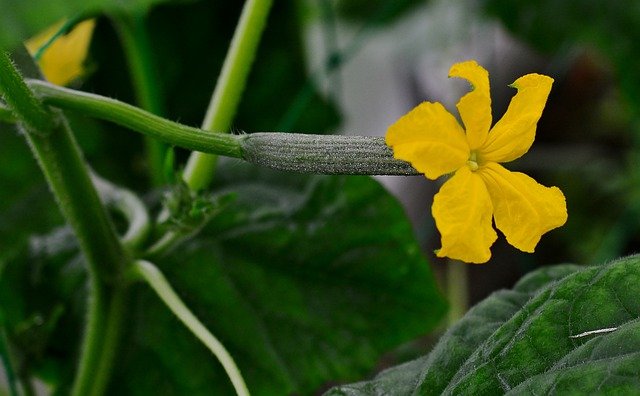
A lack of cucumber flower pollination will result in yellow cucumbers. When cucumbers are not adequately pollinated, the pollen from the male and female flowers does not mix and the cucumbers will not develop. This results in the small immature cucumber behind the female flower turning yellow before shriveling and rotting on the plant.
So if you find your cucumbers not growing and turning yellow, a lack of pollination could be the reason.
Inadequate pollination can be caused by a lack of pollinators such as bees or other insects, or by environmental factors such as wind, rain, or cold temperatures.
You can increase pollination by attracting beneficial insects into your garden with flowering plants. I love nasturtiums and marigolds as well as allowing herbs to flower.
If pollination is a problem in your garden, you can also give your cucumber plants a hand by manually pollinating them.
To do this, grab a small paintbrush and gently twirl it inside the cucumber male flower which has a thin, straight stem and pollen-filled anther. Then twirl the brush gently inside the female cucumber flower which has the immature cucumber attached to the base and a stigma. Repeat for all the flowers and you are done!
5. Cucumber Plant Diseases
Plant diseases can decrease the quality of your cucumber plants and even destroy your crop completely. If you recognize the symptoms early, you can remove the affected plants before the disease spreads.
Fusarium Wilt
As a fungal disease, fusarium wilt reduces the cucumber plant’s ability to take up water and essential nutrients from the soil. The cucumber plant leaves turn yellow, before wilting, eventually leading to plant death. Cucumber fruit is stunted in growth and turns yellow.
So if you find your cucumbers not growing and turning yellow, along with cucumber leaves turning yellow, then fusarium wilt could be the cause.
Organic treatments include removing infected cucumber plants, practicing crop rotation, and improving soil drainage.
The addition of compost, mulch, and aged manure can help improve soil health and reduce the risk of infection. And fungicides such as neem oil or organic copper fungicides can help to prevent and treat the problem if caught early enough.
Cucumber Mosaic Virus (CMV)
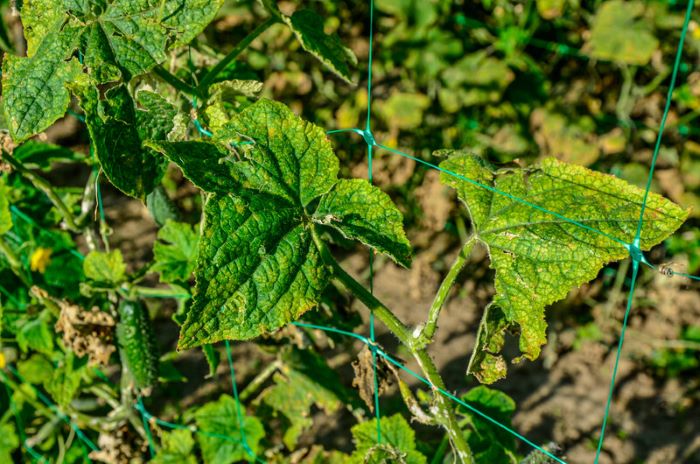
This disease causes the cucumber fruit to turn pale and bumpy and the leaves to be mottled with yellow spots. The disease is spread by aphids and can contaminate tomatoes and peppers as well as cucumbers so get rid of any diseased plants as soon as you notice symptoms.
Fortunately, CMV does not pass to the seeds or remain in the soil. Using floating row covers can minimize the risk of the disease, but they need to be removed when the plant starts to bloom to allow for pollination.
6. Cucumber Plant Pests
Cucumber Beetles
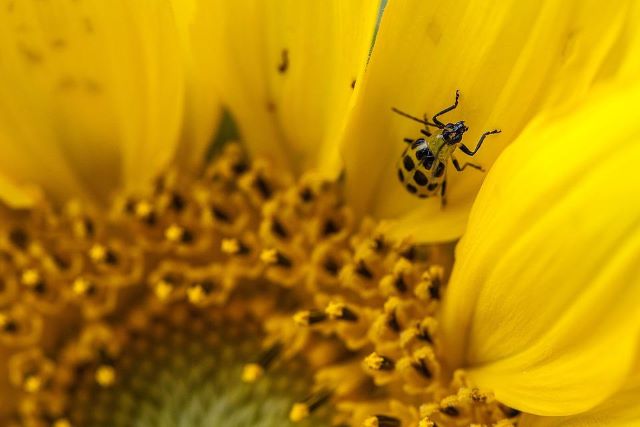
The larvae of this insect feed on the roots of the plant while the adults will eat the leaves, flowers, and fruit causing bacterial wilt. As with CMV, using floating row covers can help minimize risk.
Remove infected plants early before the beetles can spread the disease. The use of horticultural neem oil, sticky traps and trap crops can also help minimize cucumber beetles in your garden.
Aphid
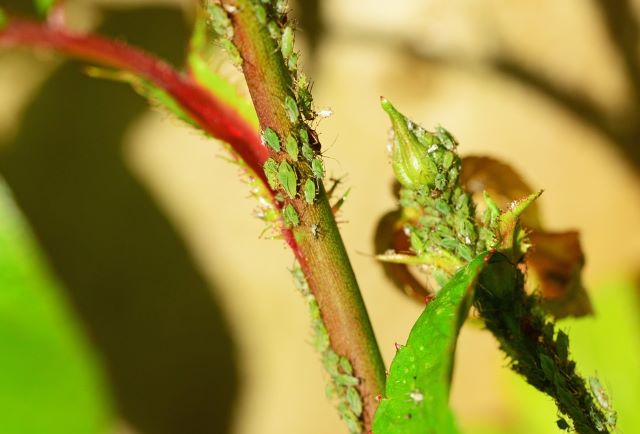
These soft-bodied pests are not always detrimental to cucumbers but they can transmit other diseases such as Cucumber Mosaic Virus, as mentioned above.
My preferred method for removing aphids is to blast them off with water. For more serious infestations, I move to an insecticidal soap spray or neem oil. Both are effective and safe for organic gardening.
7. Yellow Cucumber Varieties
The final reason that your cucumbers are yellow is that you have a yellow variety. Double-check your seed pack or your nursery label to see what variety you are growing. Here are just a few of the edible yellow cucumber varieties available:
- Lemon Cucumber – round and yellow like a lemon when it is ready to harvest and has a mild, sweet flavor.
- Chinese Yellow Cucumber – oval and dark yellow when it is ready to harvest and has a mild, sweet flavor.
- Crystal Apple Cucumber – a pale yellow to white greenish fruit, oblong in shape with a sweet, mild flavor.
- Dosakai Cucumber – small, long, and mostly yellow with hints of orange and green; it has a mild, tart flavor.
FAQ
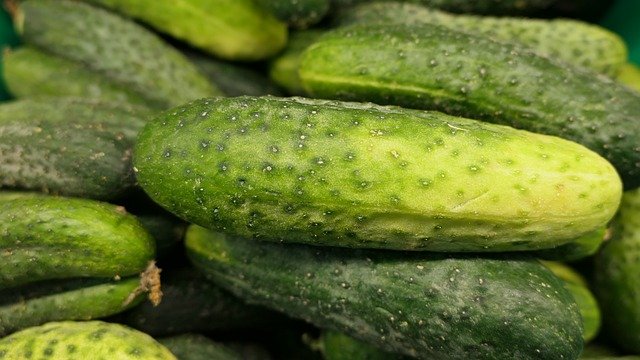
Is it safe to eat yellow cucumbers?
The short answer is… it depends. If your cucumber plants are diseased, you will have to discard them.
Provided you are growing an edible yellow cucumber variety, they are safe to eat and are normally a yellow color.
In the event your green cucumbers were left on the vine a little too long and have started to turn yellow, you can still eat them, but the skin will be tough and the taste will be bitter. They may not be the best to slice into a salad or eat by themselves, but you could add them to a recipe, such as a relish, where a little bitterness will have minimal effect on the final dish.
If the cucumbers are so over-ripe that they are turning orange and soft, it is best not to eat them.
What else can I do with yellow cucumbers?
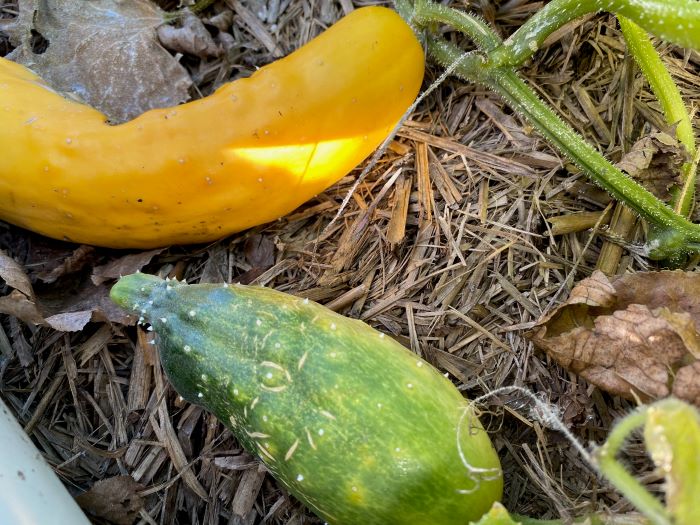
For cucumbers that are yellow simply because they are over-ripe, you can use them for seeds to replant next season. You can also use them for composting which will be beneficial for your garden no matter what you plant next season.
Summary
Don’t be disappointed by yellow cucumbers again. If you find yellow cucumbers in your garden, determine the cause and take corrective action. That might be pest control, careful watering, or simply harvesting earlier. Before you know it, you’ll be growing crisp, green cucumbers like a pro.
Further Reading:
- Pepino Melon: How To Grow The Plant And Eat The Fruit
- Growing Cucamelons: Planting, Caring and Harvesting Cucamelon
- Brown Spots On Peppers: Causes And Solutions
- Zucchini Leaves Turning Yellow: Causes and Solutions
